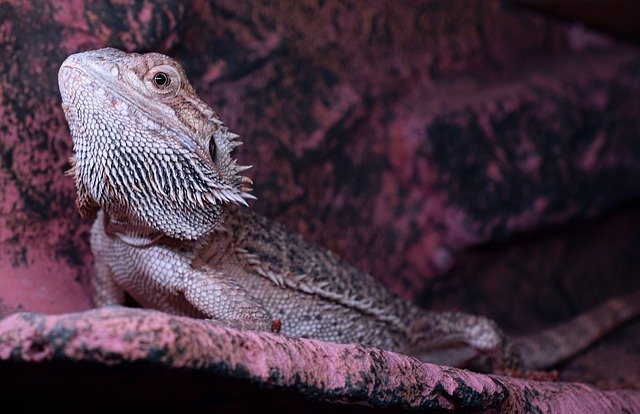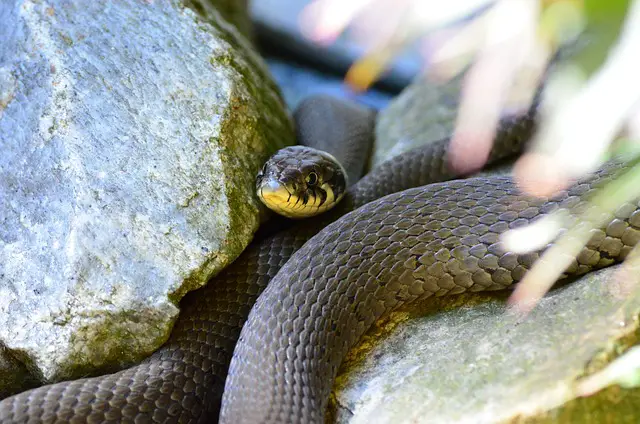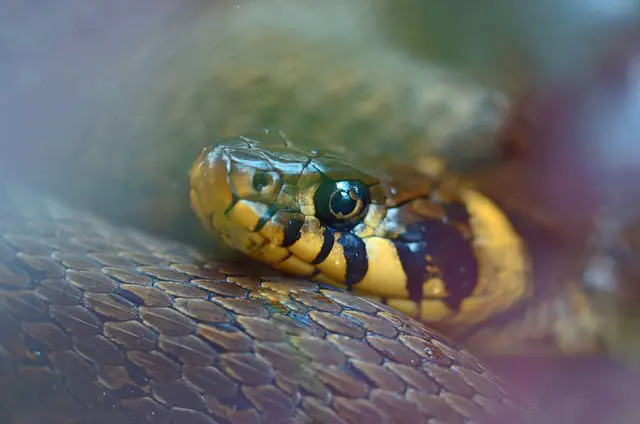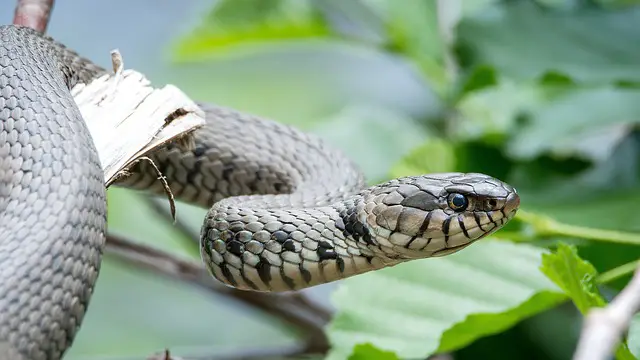Bearded dragons will demonstrate an interesting courtship ritual before they mate, and this is demonstrated through a variety of actions including foot-stomping and raising of an arm. These incredible animals reach sexual maturity between the ages of 1 and 2 years.
Introduction
One of the most common types of lizards to keep as a pet is the bearded dragon, and many people successfully breed these animals in captivity. But of course, this is best done under strict conditions so that the animals do not hurt one another.
Whether you are looking to breed your bearded dragons or are simply curious about how these amazing creatures create life, this article will explain everything you need to know about the mating process of the bearded dragon.
How Do Bearded Dragons Mate In The Wild?
Much like humans, female bearded dragons need to be wooed before they will succumb to the advances of a potential mate. There are many elaborate mating rituals in the animal kingdom, and that of the bearded dragon is certainly one of the most interesting.
These lizards will perform a sort of dance before giving in to each other and mating, and it is usually the male that will initiate this dance. How it is performed is quite extraordinary, and if a female is willing to mate with the male, she will join in and dance with him.
Both males and females may engage in a variety of behaviors during the mating dance, and this could include twitching of the tail and bobbing of the head. The male will bob his head rather frantically and will display his beard. During this process, the beard will normally darken in color, and this serves as a way to attract the female.
If she is willing, she will begin to bob her head in response, although this is usually more slowly than the male. If he is feeling rather adventurous, the male might also stomp his feet, and he pursues the female – it is important to note that in captivity, a female bearded dragon who does not want to make will make attempts to escape the male. She will usually be seen attempting to get out of the enclosure. It is important not to force mating as this can put an immense amount of stress on the animal.
When a female bearded dragon wants to mate with the male, aside from bobbing her head in return, she might also show her submission by raising her arm and waving. However, this behavior can also be observed in some males of the species.
[su_box title=”Our Bearded Dragon Care guide.”]Are you an existing Bearded Dragon owner or just starting out? Either way, we want to share with you our knowledge and experience of keeping these creatures happy and healthy. Our guide is the most concise and you can take a look by Clicking Here Now.[/su_box]
The Mating Process
Once both reptiles are happy to mate, the male will mount the female by climbing on her back. He will normally be seen to be biting her neck, usually in the most fleshy area. As their tails intertwine, this is a sign that mating has begun and is usually a relatively fast process with most bearded dragons taking around a minute to finish the process.
However, this is by no means the end of their interaction. Unlike many wild animals, bearded dragon males will stay with the female until she lays her eggs. This can be up to five weeks after mating has taken place; however, it can be as soon as three weeks.
What Happens When The Female Lays Her Eggs?
One of the most incredible parts of the breeding process of bearded dragons is seeing the female lay and protect her eggs. In this wild, animal eggs are easy prey for many predators, so it is important that the female is effectively able to conceal and protect them from harm.
Before she lays her eggs, the female bearded dragon will dig a burrow – she will not lay her eggs until this is done. Each female is different, and depending on several factors, including how often she has mated previously and her health, she may lay anywhere between fifteen and fifty eggs.
Tips For Breeding Bearded Dragons In Captivity
If you wish to breed your male and female bearded dragons, it is essential that you do so safely and with the health of both animals as a priority. As we mentioned earlier, you should never force your pets to mate if they do not want to. This will cause unnecessary stress; if you put the animals together and notice the female trying to escape, you should remove her immediately.
Before Mating
Be sure that you are feeding the female correctly and that you are giving her supplements to ensure her health is optimal for becoming pregnant.
In the first instance, when you place the animals in the same enclosure, it is likely that they won’t pay each other a great deal of attention. Just like humans in a new share house, your pets will need a little time to get used to their new living arrangements.
During Mating
You will notice that, as the pair become more comfortable, signs that mating is imminent will begin to be displayed; one of the most telltale giveaways is that the male’s beard will begin to get darker, sometimes turning black. You may then see the pair performing the mating ritual that we have already discussed.
After Mating
Once the pair has mated, you should leave them in their enclosure for at least one week together. You can then remove one bearded dragon and keep them in separate enclosures for a week. If the first round of mating was not successful, you might need to put them back together again, but it is important to leave a week between attempts and another week for them to stay together afterward. This may seem like a lengthy process, but it is the best way to do things.
It can be difficult to tell whether the female is pregnant, but a good sign to look for would be a significant increase in appetite. Two weeks after conceiving, you will visibly be able to see the belly swelling with the eggs. Over time, as the eggs get bigger, you will notice small lumps in her belly – often the size of a grape.
Providing The Female with A Good Place To Lay Her Eggs
If the female bearded dragon is not given the right environment to lay her eggs, she will not lay them and may become egg bound. This is where the eggs cannot be passed out of the body and could potentially be life-threatening.
You should be sure to keep an eye on the female as she will begin to exhibit clear signs that she is ready to start laying her eggs but rather than leaving her in her usual enclosure, it is a wise idea to have a separate ‘laying box’ for her to lay the eggs.
Signs that the female is ready to start laying may be a decreased appetite, excessive digging, and signs of anxiety. Once you notice these, remove her and place her in a pre-prepared laying box.
The laying box should have a good level of substrate at least 8 inches in depth. As we have mentioned, the female will dig down to lay her eggs, and if she does not have somewhere suitable to do this, egg binding becomes a very real issue.
Once again, it is important that you keep a watchful eye on the female to ensure that she has laid all of her eggs. It can be difficult to sit and observe her at all times, so seeing that she has laid them all might not be possible. But if you do want to watch the process, it is most common for these animals to lay their eggs either in the late afternoon or early evening.
You can check the female to see that her belly has flattened out – if there are any signs that some eggs remain inside her, and she doesn’t appear to be laying them, it is vital that you take her to the vet. If all of the eggs have been laid, you can then place the female back into her original housing. In the main, these animals will not guard their eggs once they are laid and buried, especially if they are kept in captivity.
It is now your responsibility to protect the eggs until they are ready to hatch and you can do this by putting them into an incubator between 82ºf and 86ºf, ensuring that you check the temperature twice weekly to avoid it becoming too hot. You should also check the integrity of the eggs every day.
When the eggs are ready to hatch, you may notice that they start to look rather deflated. In addition to this, you may notice a small slit appearing on the surface of the egg which is caused by a little tooth on the baby’s snout which they use to hatch out of the egg.
When the head of the young appears outside of the egg, you must remember that they will remain like this for around a day and will not immediately emerge completely. It can be tempting to try to help the babies out of the eggs, but it is important that you let nature take its course and allow them to emerge by themselves.
Conclusion
The mating ritual of bearded dragons is certainly an interesting one that involves a dance in which both the male and female interact with one another by stomping their feet, waving their arms, and displaying their beard. Once this process is over, mating can begin, and the male will mount the female.
The two will remain together for a period of time until the eggs are laid when the female will bury them in the ground for protection from predators.
It is possible to breed your pet bearded dragons in captivity provided that you have the right equipment, such as breeding enclosures and an incubator.




